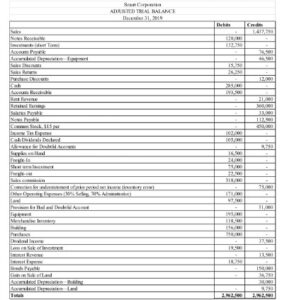Content

Similar to previous tax years, this deduction is allowed to the extent that the health insurance is not otherwise deducted in computing federal taxable income. In other words, an additional deduction is not allowed if the same health insurance premiums are deducted as a self-employed health insurance deduction or as an itemized deduction. Your whole life insurance rates are determined by your age, medical history, and coverage goals. Once decided, the premiums are fixed throughout your plan and the death benefit is certain. Some insurance companies allow you to make payments monthly, quarterly, or biannually.
In all, the insurance industry’s base broadeners were scored at $40 billion over 10 years by the Joint Committee on Taxation . An increase in the corporate tax rate to 26.5% that applies to a much larger tax base would disproportionately increase insurers’ cash tax liabilities relative to other industries/sectors. 1, formerly known as the Tax Cuts and Jobs Act, into law, completing an ambitious overhaul of US business and personal tax requirements.
Details of Public Law 117-328, section 106 , Multiple Employer 403(b) Plans
It is intended to meet certain insurance needs, investment goals, and tax planning objectives. It is a policy that pays a specified amount to your family or others upon your death. It also has a cash value that varies according to the amount of premiums you pay, the policy’s fees and expenses, and the performance of a menu of investment options—typically mutual funds—offered under the policy.
Taxpayers with loans forgiven under the Economic Injury Disaster Loan Grant or Targeted EIDL Advance, are not required to meet these qualifications to deduct expenses. Senate Bill 91 (Stats. 2021, Ch. 2) established the State Rental Assistance Program to allocate federal rental assistance funds provided pursuant to the federal Emergency Rental Assistance program describe above, and uses the federal definition of eligible household. This section also sets aside $2.5 billion for high-need grantees, which are areas with very low-income renter households paying more than 50 percent of income on rent or living in substandard or overcrowded conditions. Grantees may use excess funds for affordable rental housing and eviction prevention activities. Has one or more individuals that can demonstrate a risk of experiencing homelessness or housing instability.
Premium Adjustment When the Insured Dies
For qualified long-term care insurance, premiums paid by a policyholder are generally tax-deductible. The whole life insurance cash value usually ends up being high, but payments grow in a tax-deferred account at an established https://quick-bookkeeping.net/ rate. The premiums won’t change over time and the death benefit is certain, regardless of the time frame. In this sense, the policy functions as an investment and the death benefit payout usually reflect this.
Most state laws, however, require that all policies include a provision that if age or sex has been misstated, the amount of the insurance will be adjusted to that which the premium paid would have covered correctly. As would be expected from the discussion above, the changes in the universal life values require reporting to the policyowner on a regular basis. The annual report and projection of benefits and values state the obligation of the insurer to provide such annual reports. The policyowner can request it and may be charged $25, as shown in the sample policy in Chapter 27 “Appendix D”.
What Is Variable Life Insurance?
As you know cash value life insurance falls into the category of permanent life insurance. A portion of its premiums go into an account to build the cash value, while Us Tax Changes Could Make Life Insurance More Popular the other portion pays for the policy. The owner can access the money tax-free by taking withdrawals and/or policy loans provided it is structured properly.

In addition, the section increases the maximum credit rate from 35 percent to 50 percent and increases the amount at which the maximum credit rate begins to phase out from $15,000 to $125,000. The limitation on employment-related child and dependent care expenses is increased to $8,000 from $3,000 in the case of one qualifying individual and to $16,000 from $6,000 if there are two or more qualifying individuals. Eligible entities can receive a grant amount equal to their “pandemic-related revenue loss,” which is defined as the eligible entity’s gross receipts during 2020 minus their gross receipts during 2019, if the sum is more than $0. Different rules apply for eligible entities not in operation for all of 2019 that opened during 2020, or had incurred certain expenses but had not opened by the time of application. The aggregate grant amount cannot exceed $10 million to an eligible entity and any affiliated businesses of the eligible entity, and is limited to $5 million per physical location of the eligible entity. Eligible entities that do not use all grant funds or permanently cease operations on or before the last day of the covered period will be required to return any funds not used for allowable expenses.
